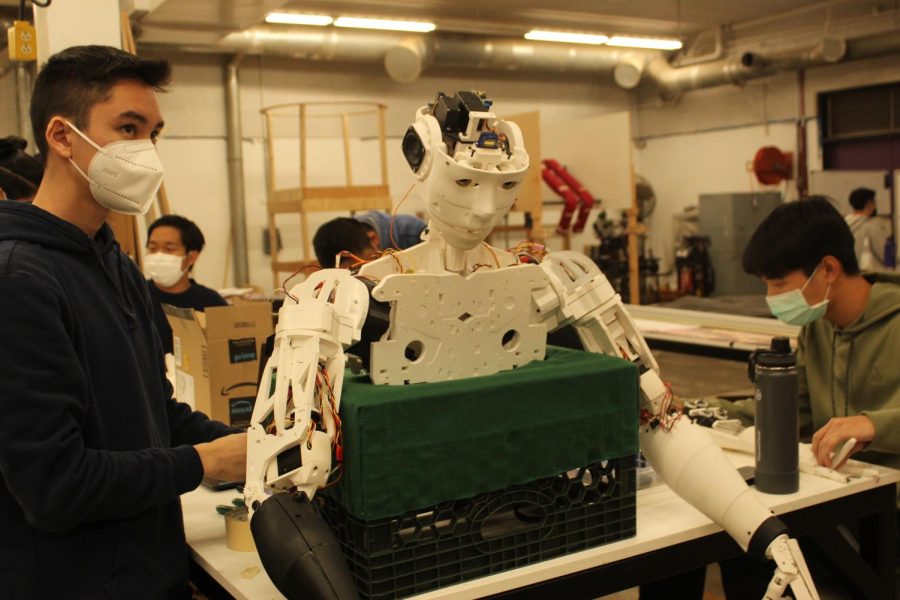Artificial intelligence translated into chess
Making their mark one limb at a time, this year’s Printed Works club is adding to their challenge of 3-D printing a complete human body with an extra feature: programming a robot that plays chess independently.
Heading the project, which started three years ago, is senior Jack Carpino, working with his team to assign roles for constructing the robot and ensuring the production process goes smoothly.
“[The construction of the robot] started three or four years ago, during my freshman year, and that year, we built a head,” Carpino said. “My junior year, we built two arms and, this year, we constructed everything together.”
Given the amount of his contributions during distance learning, Carpino is leading this year’s project, which included managing the production of the robot’s two arms and providing the Printed Works members with the materials necessary for the robot’s construction. He also worked to gather other Printed Works members who were interested in collaborating on the project.
“We met at our online meetings,” Carpino said. “At a certain point, we ran out of things to do [independently], so I decided we needed to meet once a week.”
Printed Works members seniors Timothy Chuang and Steven Tjandra as well as junior Zasky Cheng met Carpino at Grand Avenue Park once a week during the pandemic to plan out their collective vision for the robot. Their sponsor Spyder3D, a company dedicated to giving students the opportunity to succeed in engineering and science, helped them fund the project, donating most of the machines and 3-D printers necessary to complete the robot.
Junior Akiles Alvarado, who is next in line to head this project, predicts that the robot will be fully constructed by the beginning of May 2022. Despite the progress of their first robot, the club wanted to ensure members had as much experience with the robot’s construction as possible, so construction of the second robot’s arms has begun.
“We started the second one because we had an excess amount of parts for it,” Carpino said. “Before I graduate, I want to have as many people creating the second robot so that they know what to do before I leave.”
Despite the challenges of the pandemic, including the slow physical progress that was made over the course of distance learning, Carpino believes the project has been a success, especially when considering the progress the club has made over the past two years.
“When I first got the position, I did not think we would reach this moment of being so close to finishing one robot,” Carpino said. “But working through the pandemic and constructing our work with my dedicated team has been so fun. I am grateful to have a team that always shows up and is ready to work.”
Your donation will support the student journalists of Diamond Bar High School. Your contribution will allow us to purchase equipment and cover our annual website hosting costs.



